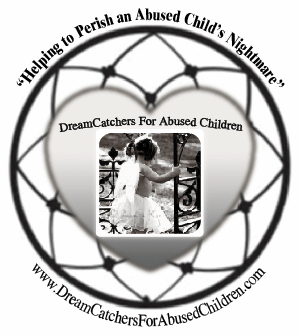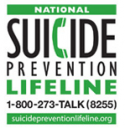Signs of Abuse
“Child abuse and neglect in the United States now represents a national emergency…Protection of children from harm is not just an ethical duty; it is a matter of national survival.” ~ U.S. Advisory Board on Child Abuse and Neglect, 1990
- Over 2.9 million cases of child abuse were reported last year in this country
- Approximately 1/3 of sexual abuse cases involve children 6 years of age or younger
- One in every four girls and one in every six boys will be sexually abused by the age of 18
- Eighty-five to 90% of sexual abuse happens with a person known to the child
- 95% of child abusers were themselves abused as children
- 80% of substance abusers were abused as children
- 80% of runaways cite child abuse as a factor
- 78% of our prison population were abused as children
- 95% of prostitutes were sexually abused as children
- Not every child who is abused is has problems of this magnitude, but we know child abuse robs far too many children of their ability to freely reach their full potential. Their loss is society’s loss and “band-aid” measures are inadequate to address this epidemic.
- Community resistance to prevention programs has fallen away as awareness has increased and as programs have become more appropriate to the developmental needs and abilities of children.
- 90% of the public believe that all elementary schools should offer prevention of child abuse programming.
- 92% of all teachers believe such instruction is effective.
- 60% of all elementary school districts mandate prevention instruction.
****************************************************************
PHYSICAL ABUSE:
Any non-accidental injury to a child. This includes hitting, kicking, slapping, shaking, burning, pinching, hair pulling, biting, choking, throwing, shoving, whipping, and paddling.
PHYSICAL ABUSE SIGNS:
* bite marks
* unusual bruises
* lacerations
* burns
* high incidence of accidents or frequent injuries
* fractures in unusual places
* injuries, swellings to face and extremities
* discoloration of skin
Warning signs of physical abuse in children
- Frequent injuries or unexplained bruises, welts, or cuts.
- Is always watchful and “on alert,” as if waiting for something bad to happen.
- Injuries appear to have a pattern such as marks from a hand or belt.
- Shies away from touch, flinches at sudden movements, or seems afraid to go home.
- Wears inappropriate clothing to cover up injuries, such as long-sleeved shirts on hot days.
BEHAVIORAL SIGNS OF PHYSICAL ABUSE:
* avoids physical contact with others
* apprehensive when other children cry
* wears clothing to purposely conceal injury, i.e. long sleeves
* refuses to undress for gym or for required physical exams at school
* gives inconsistent versions about occurrence of injuries, burns, etc.
* seems frightened by parents
* often late or absent from school
* comes early to school, seems reluctant to go home afterwards
* has difficulty getting along with others,
* little respect for others
* overly compliant, withdrawn, gives in readily and allows others to do for him/her without protest
* plays aggressively, often hurting peers
* complains of pain upon movement or contact
* has a history of running away from home
* reports abuse by parents
economic stress
parent(s) were abused as children themselves, were raised in homes where excessive punishment was the norm, and use harsh discipline on own children
highly moralistic
history of alcohol or drug abuse
are easily upset, have a low tolerance for frustration
are antagonistic, suspicious and fearful of other people
social isolation, no supporting network of relatives or friends
see child as bad or evil.
little or no interest in child’s well-being;
do not respond appropriately to child’s pain
explanation of injuries to child are evasive and inconsistent
blame child for injuries
constantly criticize and have inappropriate expectations of child
take child to different physicians or hospital for each injury
****************************************************************
SEXUAL ABUSE:
Sexual abuse is any sexual contact with a child or the use of a child for the sexual pleasure of someone else. This may include exposing private parts to the child or asking the child to expose him or herself, fondling of the genitals or requests for the child to do so, oral sex or attempts to enter the vagina or anus with fingers, objects or penis, although actual penetration is rarely achieved.
SEXUAL ABUSE STATS:
- 10% of those children sexually abused are preschoolers (Children’s Hospital, D.C.)
- 85-90% involve perpetrator known to the child (Groth, 1982; DeFrancis, 1969; Russell, 1983)
- 35% involve a family member (King County Rape Relief, Washington)
- 50% of all assaults take place in the home of the child or the offender (Sanford, 1980)
- The average offender is involved with over 70 children in his or her “career” of offending (Sanford, 1980, Abel and Becker, 1980)
PHYSICAL SIGNS OF SEXUAL ABUSE:
- difficulty walking or sitting
- torn clothing,
- stained or bloody underwear
- pain or itching in genital area
- venereal disease, especially in preteens
- pregnancy
Warning signs of sexual abuse in children
- Trouble walking or sitting.
- Displays knowledge or interest in sexual acts inappropriate to his or her age, or even seductive behavior.
- Makes strong efforts to avoid a specific person, without an obvious reason.
- Doesn’t want to change clothes in front of others or participate in physical activities.
- An STD or pregnancy, especially under the age of 14.
- Runs away from home.
BEHAVIORAL SIGNS OF SEXUAL ABUSE:
- sudden reluctance to go someplace or be with someone
- inappropriate displays of affection
- sexual acting out
- sudden use of sexual terms or new names for body parts
- uncomfortableness or rejection of typical family affection
- sleep problems, including: insomnia, nightmares, refusal to sleep alone or suddenly insisting on a night light
- regressive behaviors (thumb-sucking, bed-wetting, infantile behaviors or other signs of dependency)
- extreme clinginess or other signs of fearfulness
- a sudden change in personality
- problems in school
- unwilling to participate in or change clothing for gym class at school
- runs away from home
- bizarre or unusual sophistication pertaining to sexual behavior or knowledge, including sexual acting out
- reports sexual assault by parent or guardian
PARENTAL SIGNS OF SEXUAL ABUSE:
Overly protective or jealous of child and friends
abuses alcohol or other drugs
encourages exhibitionism in child
voyeuristic, seductive to child
exposes child to pornographic and sexually stimulating pictures
encourages the child in promiscuous and/or prostitute acts
freely talks or boasts about sexual themes with child
****************************************************************
EMOTIONAL ABUSE:
Emotional abuse is a pattern of behavior that attacks a child’s emotional development and sense of self-worth. Emotional abuse includes excessive, aggressive or unreasonable demands that place expectations on a child beyond his or her capacity. Constant criticizing, belittling, insulting, rejecting and teasing are some of the forms these verbal attacks can take. Emotional abuse also includes failure to provide the psychological nurturing necessary for a child’s psychological growth and development — providing no love, support or guidance (National Committee for the Prevention of Child Abuse, 1987).
SIGNS OF EMOTIONAL ABUSE:
*child rocks, sucks, bites self
* inappropriately aggressive,
* destructive to others
* suffers from sleep, speech disorders
* restricts play activities or experiences
* demonstrates compulsions, obsessions, phobias, hysterical outbursts
Warning signs of emotional abuse in children
- Excessively withdrawn, fearful, or anxious about doing something wrong.
- Shows extremes in behavior (extremely compliant or extremely demanding; extremely passive or extremely aggressive).
- Doesn’t seem to be attached to the parent or caregiver.
- Acts either inappropriately adult (taking care of other children) or inappropriately infantile (rocking, thumb-sucking, tantruming).
BEHAVIORAL SIGNS OF EMOTIONAL ABUSE:
* negative statements about self
* shy, passive, compliant
* lags in physical, mental and emotional development
* self destructive behavior
* highly aggressive
* cruel to others
* overly demanding
****************************************************************
NEGLECT
Warning signs of neglect in children
- Clothes are ill-fitting, filthy, or inappropriate for the weather.
- Hygiene is consistently bad (unbathed, matted and unwashed hair, noticeable body odor).
- Untreated illnesses and physical injuries.
- Is frequently unsupervised or left alone or allowed to play in unsafe situations and environments.
- Is frequently late or missing from school.
****************************************************************
Common problems for abused children include:
- emotional problems
- behavioral problems
- poor performance in school
- further abuse
While these effects are not always obvious, they are important.
Long-term studies of low achievers, runaways, drug abusers, prostitutes and incarcerated individuals paint a disturbing picture. Abuse is a consistent and pervasive element in their backgrounds. Low self-esteem and poor self-concept are ever-present.
Knowing this, there can be little doubt that children who are abused, as well as adults who were abused as children, need assistance to resolve the questions that the abuse experience has raised, even if that assistance does not come until years after the abuse.
SOURCE: http://helpguide.org/mental/child_abuse_physical_emotional_sexual_neglect.htm
****************************************************************
Identification of Child Abuse & Neglect
A key to reporting child abuse and neglect is being able to recognize common indicators. Find factsheets, reference books, and research on definitions, signs, and symptoms of different types of child maltreatment. PLEASE CLICK ON THE LINKS BELOW TO VIEW THE SIGNS & SYMPTOMS OF EACH CATEGORY OF CHILD ABUSE:
| Recognizing Child Abuse and Neglect: Signs and Symptoms | |
| Series Title: | Factsheets |
| Author(s): | Child Welfare Information Gateway |
| Availability in English: | View Download (PDF – 199KB) Order (Free – Add to Cart) |
| Availability in Spanish: | View Download (PDF – 198KB) Order (Free – Add to Cart) |
| Year Published: | 2007 – 4 pages |
| The first step in helping abused or neglected children is learning to recognize the signs of child abuse and neglect. This factsheet lists general signs that may signal the presence of child abuse. It also includes signs associated with specific types of maltreatment such as physical abuse, neglect, sexual abuse, and emotional maltreatment. | |
SOURCE: http://www.childwelfare.gov/can/identifying/




















![Validate my RSS feed [Valid RSS]](http://dreamcatchersforabusedchildren.com/wp-content/uploads/2009/10/valid-rss.png)













National Child Abuse Month Giveaway | Mommy PR Says:
[…] Signs Of Abuse […]
Posted on April 1st, 2010 at 5:52 am